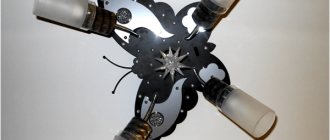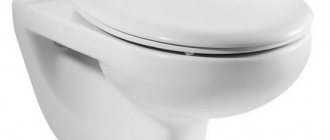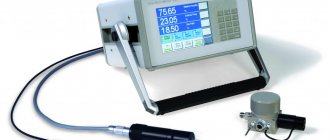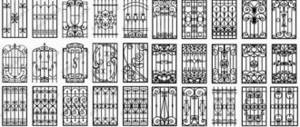No Frost: what's in the refrigerator
The No Frost system is special in that there is no frost or ice on the walls of the refrigerator. Accordingly, it does not require defrosting. In models without this technology, the freezer stacks become covered with ice due to increased humidity. To prevent ice from appearing, you need to fight this humidity. It is often called a “dry freezing system”.
Principle of operation
In a regular refrigerator, heat is removed from food using an evaporator, which is located in the back wall or around the freezer. The principle of operation of No Frost technology resembles the principle of operation of an air conditioner. In them, the evaporator does not wrap around the chambers, but is located in one place outside the chambers or between them. One or more fans direct flows of cold air into the chambers through deflectors.
Drops of moisture that form on the walls are dried under the influence of air currents, so nothing freezes anywhere. In turn, the ice that appears on the evaporator tubes is melted by the heater and flows into a pan located above the compressor. The heater does not operate continuously, but periodically.
Since the compressor is constantly heating up, the liquid from the pan evaporates. What does this give? The refrigerator does not need to be defrosted, drained, and requires almost no maintenance.
No Frost in the refrigerator
How to remove frost
In drip systems, the evaporator cools the back wall of the refrigerator compartment and freezer. As you probably noticed, the compressor in the refrigerator does not operate continuously; the operating mode is replaced by stops. While it is working, the evaporator cools, and small pieces of ice appear on the cooled wall next to it, formed from the moisture contained in the air. Then the compressor turns off, and the ice melts, and the resulting water flows through special technological channels-grooves into a tray above the compressor. The compressor turns on again, heats up, and the water evaporates. Meanwhile, new pieces of ice form and the cycle constantly repeats.
The No Frost unit works differently. The main way it differs from a drip system is the presence of a built-in fan-cooler.
The fan ensures constant circulation of cold air in the refrigerator. In this case, the evaporator is located in a special compartment, usually between the freezer and refrigerator compartments.
Air enters the evaporator from one side, cools and exits from the other side, leaving frost on the evaporator. The frost thaws during the compressor's non-operating time, and the water also flows into a tray, which is usually located outside the device, on the back wall, directly above the compressor.
Only refrigeration chambers are equipped with drip defrosting. Both freezers and refrigerated cabinets are equipped with the know frost system
Types of system
There are two main types of systems:
Frost Free - in this case, the No Frost technology is implemented only in the freezer compartment; in the refrigerator compartment, drip technology is used, the so-called. "crying wall" As a result, there are two different cooling circuits. The advantage is normal humidity (70-80%) in the refrigerator compartment, which prevents the products from weathering and retains their taste and appearance longer. While ice does not freeze in the freezer, you can easily freeze vegetables for a long time.
Full or Total No Frost - both the freezer and refrigerator compartments of the refrigerator are equipped with a No Frost system. The refrigerator compartment has low humidity, and food can become airy if not carefully packaged; food containers will help prevent this.
Advantages and disadvantages
After we found out what the No Frost defrosting system is, it's time to look at the advantages and disadvantages of this system. Rely on the points below to help you make your decision, but at the same time, do not neglect the advice of the store manager.
pros
- Low humidity levels.
- Products are protected from freezing. There are no temperature changes in the chamber, which ensures uniform cooling.
- Air circulation in the chamber allows you to quickly restore the optimal temperature after you put warm food in or open the door.
- The refrigerator does not need to be defrosted. Such a purchase will relieve you of the burdensome procedure. But if you want the unit to serve for a long time without bacteria and unpleasant odors, clean the refrigerators and freezers once or twice a year.
Minuses
- Some models with the No Frost system are noisy, so before purchasing you should study the technical characteristics of the model and ask the seller.
- In refrigerators with No Frost, food dries out a little faster. Store them in a sealed container, or preferably in airtight containers.
- High cost compared to models equipped with a drip system.
Popular models
Hansa BK318.3FVC - built-in refrigerator with No Frost defrosting freezer compartment. A solution for those who want to visually enlarge the room. The model is equipped with electronic control with a control panel without a display and the “Door Open Signal” function.
Hansa FK327.6DFZХ is a combined refrigerator with No Frost defrosting for the freezer and refrigerator compartments. This is a more technologically advanced model that has many functions: SuperCool, SuperFreeze, Eco, high temperature alarm in the freezer compartment. The control panel is equipped with a display.
Advantages and disadvantages
Refrigerators with the No Frost system are easy to use and, in most cases, fully satisfy the needs of customers.
But let's look at their strengths and weaknesses. 5 undeniable advantages:
- No need to defrost. This greatly simplifies the life of housewives and saves time, since ordinary refrigerators had to be defrosted for several hours, and sometimes this resulted in water leaks and floods in the neighbors.
- If there is a power outage, the refrigerator will not leak because there is no ice.
- Fast cooling. Products will cool faster with the help of cold air flows. In classic models without No Frost, heat transfer occurs through natural convection; forced circulation and cooling are always better.
- Uniform temperature. Again, due to the forced movement of air, the temperature throughout the entire volume of the chamber is approximately the same.
- Fast temperature recovery. When opening the door, short-term power outages.
But every barrel has a fly in the ointment, and refrigerators with the No Frost system have weaknesses or negative sides:
- Air currents dry and weather food, you need to remember this and do not put open packages of food in the refrigerator - wrap them in cling film or put them in trays.
- The volume of a refrigerator with a No Frost system is slightly smaller than that of models without it, this is due to the presence of additional equipment - fans and air ducts. Although this is more of a feature than a drawback.
- Higher consumption than conventional refrigerators due to consumption by the same fans and defrosting heating element.
- The fans, although not very loud, are still noisy. Manufacturers resort to various technical solutions to reduce the noise level of their products, so you need to compare the actual noise levels of specific models before drawing conclusions.
- Higher cost than drip or classic refrigerator models.
Varieties
The nofrost design involves two types of refrigerators:
- Frost Free;
- Full No Frost and Total No Frost.
The very first systems had only one fan supplying the entire chamber with cold air. But such technology has not been relevant for several years. It has been transformed into three new modifications, which will be discussed below. Some budget Asian models still use only one fan. But such a phenomenon is rare in our market.
It is extremely rare to find No Frost refrigerators operating with one fan.
Modern models are designed in such a way that cold air is supplied to each compartment through a separate channel. This promotes uniform cooling of products in any part of the chamber. Models with inverter compressors have two fans, which significantly increases their efficiency.
Possible faults
No Frost system refrigerators have faults similar to conventional refrigerators, for example:
- If the device does not turn on, or turns on but does not make sounds or freeze, the compressor is faulty.
- If it does not respond at all to being turned on, or even the light does not come on when the door is opened, either the power cord or the control board is faulty.
- Ice formation or liquid leakage from somewhere indicates a faulty heater or an interrupted heating cycle.
- Sometimes malfunctions are associated with a loose door fit or incomplete pressing of the limit switch (usually located along the perimeter of the chambers at the end, so that the door presses on it when closing).
- Unclear operating mode: excessive freezing or vice versa - poor cooling can occur due to faulty temperature sensors, thermostats or problems with the compressor, and it cannot create normal pressure.
- If freon leaks, the refrigerator freezes poorly or does not freeze at all.
- The fan may not rotate due to frozen blades or if the motor is burned out.
- If the defrost timer is faulty, the heating element will work continuously.
On a note! In modern household appliances, control boards often fail.
Operating principle of the technology, design features
The No Frost system is a method of cooling products, during which ice or frost does not form on the walls inside the refrigerator.
It is because of this feature that the technology got its name “No Frost”, which means “without frost”. The source of cold in dry freezing is the evaporator. It is placed outside the freezer and refrigerator compartment and does not come into contact with its surface. At the same time, the evaporator is blown by fans. Next, the cooled air enters the refrigerator using branched multi-level ventilation, where forced intensive circulation of air flow is created.
Depending on which section of the refrigerator the No Frost cooling system is used in, there are Frost Free and Full No Frost. The Frost Free defrosting system operates only inside the freezer, while Full No Frost operates in both chambers. In the medium-temperature compartments of Frost Free refrigerators, a drip defrosting system is used, which avoids some disadvantages (noise level, drying out of food, reduced usable volume, increased power consumption), which will be described in more detail below. Full No Frost is sometimes also called Total No Frost, but this is not entirely correct. In fact, this name is given to improved freezing technology from some manufacturers (LG, Whirlpool), which replaced the usual “dry freezing”.
Sometimes, when choosing equipment, the buyer becomes completely confused and does not see the difference between Low Frost and No Frost technologies. What is the LF system actually? This is an improved technology for conventional freezer freezing. The special design of the evaporator, which is located across the entire surface of the freezer compartment from the outside, reduces the formation of an ice crust, but this process is still inevitable, so cleaning such a unit from ice will be necessary several times a year. If you are in doubt about whether to choose a Low Frost or No Frost defrosting system, which is better, pay attention to the pros and cons of “dry freezing” below.
How to care for a No Frost refrigerator - 10 practical steps
Any equipment requires periodic maintenance. Refrigerators with a No Frost system require periodic cleaning. For this:
- We reduce the temperature regulator to the “weakest” position. Some models may have some functions to reduce the cooling intensity, after which we turn off the power - remove the plug from the socket.
- We take out all the products, leave the door open and wait until the temperature of the chambers and their walls approaches room temperature.
- After heating to room temperature, all removable drawers and shelves can be washed under running warm water. Then wipe it dry (so that no ice forms after switching on).
- The inner walls of the chambers can be cleaned with a baking soda solution. To prepare it, you need to dilute 1 tablespoon of baking soda in 1 liter of water.
- To avoid scratching the walls, wipe them with a soft cloth soaked in the solution.
- If dirt has accumulated in the corners, clean all hard-to-reach places with a soft-bristled brush, or a toothbrush will do.
- For best results, repeat the above after 15 minutes.
- Wipe shelves and all surfaces dry with a lint-free cloth, such as microfiber.
- Reassemble everything in reverse order, load the food and turn on the refrigerator. Don't forget to set the required temperature.
- To restore the internal temperature faster, use the quick freeze function, it is present in most models.
Watch a video of how No Frost works
Who should buy a No Frost refrigerator?
According to the no frost operating principle, ice and frost still form in refrigerators. But they accumulate where you cannot see, namely on the evaporator or the wall. Its defrosting occurs automatically according to the drip principle (when the compressor is turned off or operates at minimum power).
There are several myths about this technology:
- Harm to health. Proponents of this theory believe that No Frost technology uses toxic freon, which ends up in food. This is not true, freon is the same as in any other refrigerator. There is no way he can get to where food is stored. It does not evaporate into the environment, so you will not inhale it.
- Drying food. This is only half true. Yes, it is true that due to the circulation of cold air, food dries faster. But this only applies to cases of long-term storage. Chapping can be easily prevented by using containers or cling film.
- There is no need to defrost the refrigerator. It all depends on how often you use it. The more often you open the door, the more intensely the chamber will cool. Because of this, the ice on the evaporator does not have time to thaw, and over time, a thick layer of ice forms on it. You can notice this by the fact that the refrigeration appliance has become less able to maintain the desired temperature.
- Smaller usable volume. To avoid such disappointments, carefully study the technical characteristics of the model you choose. Visually it is difficult to determine the capacity of the refrigerator.
After purchasing and installing the refrigerator, you should carefully read the instructions for use.
You need such a device if you:
- Live in conditions of high humidity.
- You don’t want to waste time on systematic defrosting.
- Take advantage of additional features: freshness zone, blast freezing or super freezing.
- Store food in the refrigerator for a long time.
- Do you use the refrigerator often?
No Frost refrigerators keep food fresh longer.











